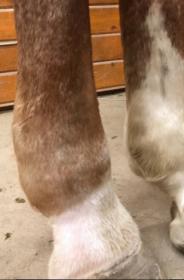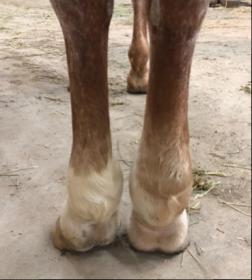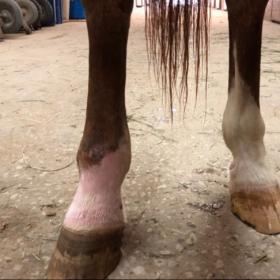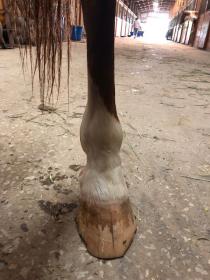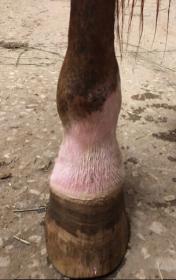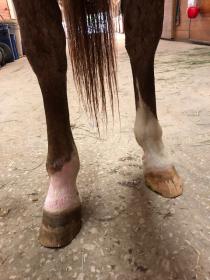I have the vet coming out to look at my boy/ do an ultrasound, but am interested in getting others opinions/ experiences. Want to explore all avenues since I am worried that there may not be a singular cause/ answer to his problem!
I have an 18 yr old who is consistently ridden, shown a handful of times during the summer (when I got him at age 11 he was green broke and did not begin jumping until age 13)
He has always had stocking up in his R hind, but always goes down with exercise or extensive turnout time, gets chiro adjustments every year and hocks injected every 6 months for stickiness. Has absolutely no history or lameness or serious injuries and has been barefoot his entire life.
Within the past 3-4 months his R hind fetlock has been bigger than usual, the past month has been the biggest. He presents with hard swelling, slight heat specifically on the middle anterior portion of the fetlock, bigger than usual windgalls, and posterior swelling that looks like a low bowed tendon. He has had absolutely no lameness/ stiffness and his leg goes down at least 1/2 size during exercise or after turnout time.
poultice wraps, bandaging, and cold hosing don’t provide any noticeable difference in size, but DMSO sweating seemed to bring down swelling.
After the chiro came in for an annual adjustment he seemed concerned about his leg and thought it could be a possible extensor tendon injury. Since the appt I have noticed him knuckling his R hind in the Xties and in his stall. Since, I have also been treating him with MTG for scratches on his front and hind leg (I noticed this after he was loosing hair and leg was becoming pink w/scabs) after treating, leg still remained the same in size.
Again, absolutely no lameness, stiffness, or unusual pain/ agitation from him.
what could be the possible cause/ has anyone had a similar problem? how long should I expect for recovery/ what would be a possible prognosis?
I have attached pics for reference
